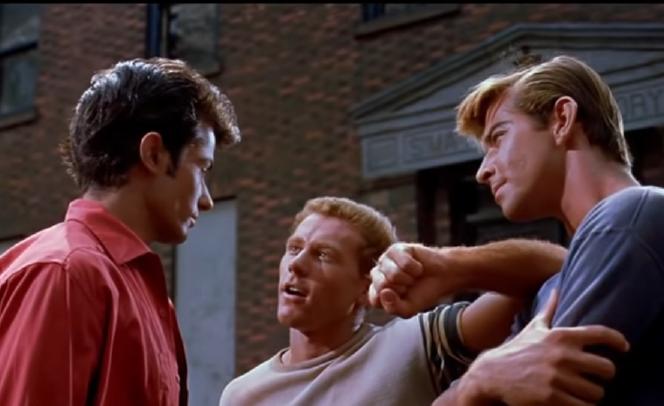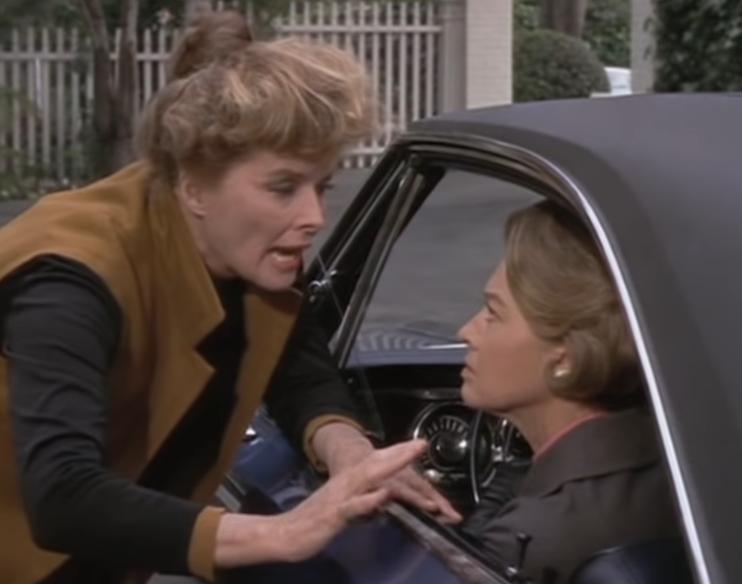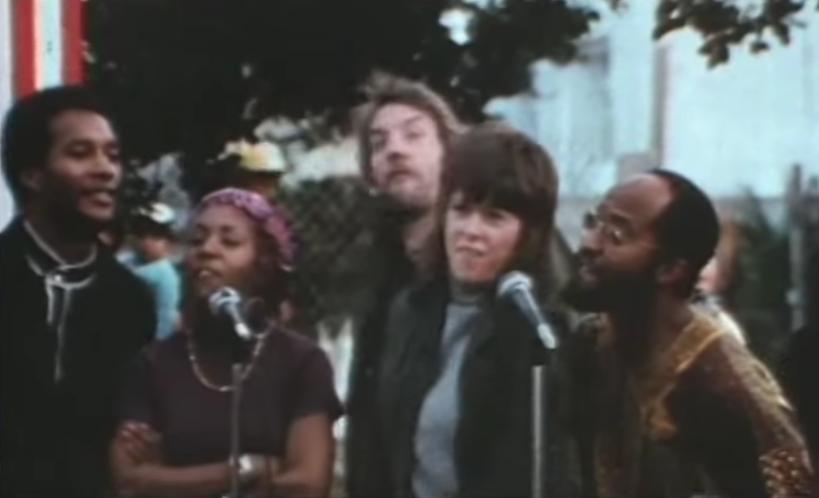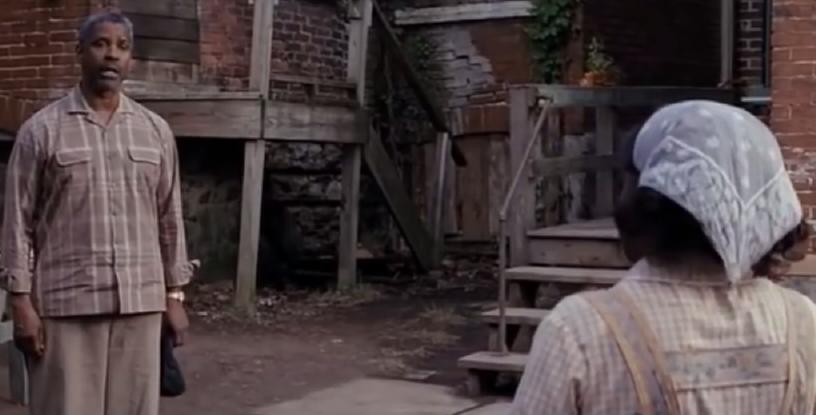DeLoggio Achievement Program
Selection of and Preparation for College and Professional Programs
Culture by Cinema
Racial Equality
West Side Story
Although the largest racial conflict in the United States in terms of population and history has until very recently been the story of Blacks versus Whites (as we discussed in the Civil War section), the first issue we were willing to address on film was the "influx" of Hispanics. Our turn-of-the-century conflicts with Mexico and Cuba have not, to the best of my knowledge, been addressed in film. Our first big social issue with Hispanics came with Puerto Rico.
According to Wikipedia, the United States acquired Puerto Rico as part of the settlement of the Spanish-American war of 1898; Puerto Ricans "were collectively made U.S. citizens" in 1917 as a result of the Jones-Shafroth Act.[268] This act faced much popular opposition in Puerto Rico, because many people believed it was done so that Puerto Rican men could be drafted to fight in the First World War. Starting soon after World War II, poverty, cheap airfares, and promotion by the island government caused waves of Puerto Ricans to move to the United States, particularly to the Northeastern states, and Florida.[217] It was this influx of Puerto Ricans into New York that sparked interest in the issue captured in "West Side Story."
Credit for the screenplay should go to William Shakespeare, since the story is a retelling of the tale of "Romeo and Juliet." The Capulets and the Montagues are replaced by the Polish and the Puerto Ricans, and Romeo and Juliet are replaced by Tony and Maria. Not much else is changed.
Planted almost innocuously into the retelling of this tale is the subtext of many immigrant cultures: the women are happy in America, seeing greater economic opportunities, fewer gender-based restrictions, and a higher standard of living. The men, however, see themselves as degraded by having to take jobs at the bottom of the economic ladder. This battle of the sexes is played out in the scene "America."
NOTE: at the time of this writing, it is reported that Steven Spielberg is making a new version of West Side Story. From the early previews, it appears not to be a story about Puerto Rican immigrants, so you'll have to go to the 1961 version for this history to make sense.
Guess Who's Coming to Dinner
"Guess Who's Coming to Dinner" might seem trite, outdated, and elitist by current standards. But, having been produced before the Supreme Court decided that interracial marriage was a Constitutional right (in the case of Loving v. Virginia), the producers were taking a large risk.
Much was made of the presentation of Dr. Prentice (Sidney Poitier) as a "Superman;" but that's the point of the story; that even a black Superman is not good enough to marry a white woman.
The film was shot after the Supreme Court had agreed to hear the case of Loving v. Virginia, but before the case was decided.The timing was at a truly pivotal point in civil rights history; one wonders whether the film would have been released had the Court decided differently. The extremes of attitude are best shown in this scene, considered by many (including me) to be one of the best in the movie:
Hidden Figures
"Hidden Figures," like so many docu-dramas, is a convenient convergence of facts to make a good movie. The film portrays a fairly accurate treatment of Blacks in the South in 1961. But NASA had been desegregated by then, and Katherine Vaughn had already been the supervisor of the department for over a decade by the time of Glenn's flight.
The women portrayed in this scene are the actual hidden figures of the NASA program. Two of the three stars had already been promoted out of the general computing pool to special jobs – Mary (Janelle Monáe) was earning her engineering degree, and Katherine Goble (Taraji P. Henson) was already assigned to the flight trajectory team. The women in this scene are the countless hidden figures who did the computing for the generations before the word "computer" referred to a machine instead of a human being. NOTE: as in "West Side Story," there is a subtext of the gender divide in the jobs.
FTA
"FTA," politely referred to as "Free The Army," but popularly referred to as "F*ck the Army," is a documentary about antiwar demonstrations in the United States as well as in South Vietnam encouraging soldiers to voice their opposition to the war. A strong subtext through the movie is that a disproportionate number of the soldiers are Black or Hispanic. This was due to a combination of circumstances, the most significant of which were that anyone who was in college got a draft deferral, and anyone whose parents were wealthy or connected could manage to buy a medical release. This is the series of events that earned Jane Fonda the nickname "Hanoi Jane." Interestingly, although actor Donald Sutherland was with her throughout the tour, his reputation or loyalty to his country was never questioned.
At this time, the link goes to the entire hour and a half documentary. Such links have a nasty habit of disappearing, however, so should you get here and find an "all gone" message, email me and I'll find another link.
Fences
In "Fences," black actors and themes have finally risen above the trite or the apologist in mainstream movies. Produced from a play written by August Wilson, Fences tells the story of an aging black man who feels like a failure. He believes he could've been "a contender" in baseball had he been in his prime when Blacks were finally allowed to play in the major leagues. Perhaps in an effort to bolster his manhood, he has an affair with a coworker and winds up bringing a baby home to his wife. My favorite moment in the movie is when she vents her rage and fear at slipping back into the "disrespectful" non-nuclear family she had sworn not to become. This is one of the few times that I've felt that I was looking at black people through their own eyes instead of through the eyes of outsiders.
This film didn't get half the critical or artistic acclaim that it deserved, and I don't know whether that was because the white majority of critics and voters for awards didn't care about the lives of black people or because they just honestly didn't get it.
| Copyright | Take me to Home Page |






